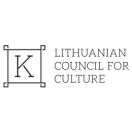A Difficult Age. Szapocznikow – Wajda – Wróblewski
We invite you to the new main exhibition “A Difficult Age. Szapocznikow – Wajda – Wróblewski“.
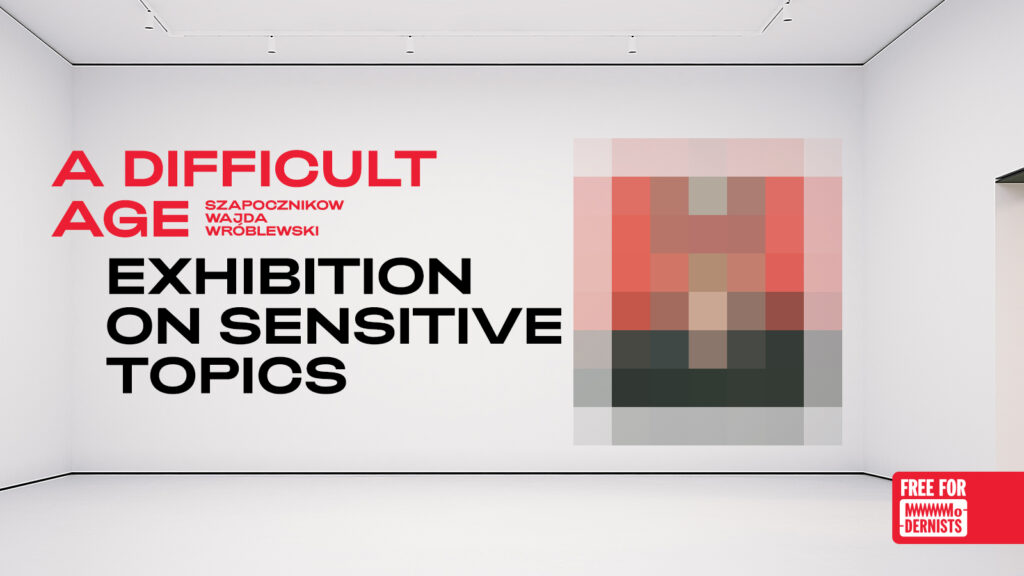
About the exhibition
After the outbreak of a global pandemic, the opening of the exhibition “A Difficult Age. Szapocznikow – Wajda – Wróblewski” originally planned for the autumn of 2020, had to be delayed to 2021. This exhibition is the largest and most ambitious MO Museum project to date, involving 25 foreign museums, galleries and private collections. About 120 works will be on display from 5 different countries.
“A Difficult Age. Szapocznikow – Wajda – Wróblewski” presents the work of Poland’s most prominent and widely acclaimed post-war artists: film director Andrzej Wajda (1926–2016), conceptual sculptor Alina Szapocznikow (1926–1973), and painter Andrzej Wróblewski (1927–1957). The exhibit’s main theme is an exploration of the adolescent experiences endured by these three artists – all born in the same period and all having lost a parent early in life – and the impact of these events on their work. The unprecedented scale of brutality committed during the Second World War left a profound mark on the lives of all three artists. The curator of the exhibition, the legendary Polish art historian and curator Anda Rottenberg, reveals how the same symbols and metaphors repeat themselves in different areas of art: painting, cinema, and sculpture.
The title of the exhibition “A Difficult Age” is borrowed from Alina Szapocznikow’s sculpture from 1956, depicting a teenage figure. A Difficult Age refers both to a difficult, tragic historical time, and one of the most important and complicated periods of human maturation – adolescence.
The exhibition also marks a historic moment by representing painter Andrzej Wróblewski at MO Museum who was born and raised in Vilnius. Wróblewski’s connection to Vilnius and his significance for art in Poland in the latter half of the twentieth century became the main reason for the organization of this exhibition at MO Museum.
The exhibition is conceived as a variation of the exhibition “Perspective of Adolescence. Szapocznikow – Wróblewski – Wajda”, which took place in the summer of 2018 at the Silesian Museum in Katowice.
The exhibition was organized together with the Adam Mickiewicz Institute in Warsaw. Special thanks to the Andrzej Wróblewski Foundation and the custodians of Alina Szapocznikow’s legacy – the artist’s son Piotr Stanislawski, Galerie Loevenbruck and the Hauser & Wirth Gallery.
The artists presented in the exhibition
Alina Szapocznikow is a Polish sculptor who survived the Holocaust. She radically reconceptualized the sculpture. Szapocznikow began experimented with new materials and techniques, using assemblage, plastic cement, polyester and toxic polyurethane. She focused on the themes of death, illness, temporality and female identity. Szapocznikow admired the ideas of Surrealism, New realism and Pop art. Szapocznikow’s works have been presented at the MoMA Museum (New York), WIELS Center for Contemporary Art (Brussels), Pompidou Center (Paris) and others.
Andrzej Wróblewski was born and raised in Vilnius, in the family of the famous artist Krystyna Wróblewska and Stephen Bathory University Professor Bronisław Wróblewski. He is considered one of the most prominent post-war artists in Poland. The artist presented an exceptional approach to the themes of war, death, and historical memory.
Andrzej Wajda is one of the most prominent Polish film directors in the world, known as the author of “Canal” (1957), “Ashes and Diamonds” (1958) and “Katyn” (2007). The complex historical themes of Poland, the horrors of war, ideological oppression and human moral self-determination are the main themes of his films. Wajda’s films have won the Golden Palm Branch, the Golden Bear at the Berlin Film Festival and many other awards, the director has received the European Film Academy Award and the Lifetime Achievement Award for all his work.
Exhibition team
Curator – Anda Rottenberg
Curatorial team: Gabrielė Radzevičiūtė, Magdalena Komornicka, Julian Klonowski, Ieva Stasevičiūtė
Architects – jojko+nawrocki architekci (Agnieszka Weber, Bartłomiej Nawrocki)
Graphic design – Klimaitė Klimaitė
Production – Dominykas Šavelis
Works and visual materials were lent to the exhibition by
Andrzej Wróblewski Foundation; Annette Messager; Gallery and Auction house LIBRA, Warsaw; Hanna and Jarosław Przyborowski / Signum Foundation; Manggha Museum of Japanese Art and Technology, Andrzej Wajda’s Archive, Krakow; National Museum in Krakow; Muzeum Lubuskie, Gorzów Wielkopolski; National Museum in Lublin; Michał Januszaniec; Museum of Art in Łódź; Museum of Independence in Warsaw; National Museum in Poznan; Silesian Museum, Katowice; Starak family foundation; Starmach Gallery, Krakow; Tadeusz Rolke / Agencja Gazeta; District Museum in Toruń; Warsaw Museum of Modern Art; Zachęta – National Gallery of Art, Warsaw; National Museum in Warsaw; National Museum in Wroclaw; the Estate of Alina Szapocznikow / Piotr Stanislawski / Galerie Loevenbruck, Paris / Hauser & Wirth; Dr Werner Jerke; Wojtek Fibak and the private collectors who preffered to remain anonymous.
Exhibition Strategic Partners
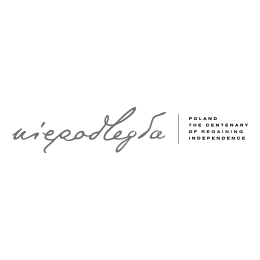
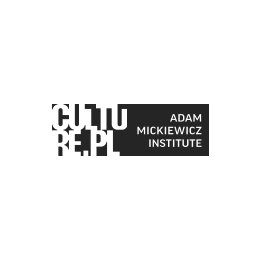
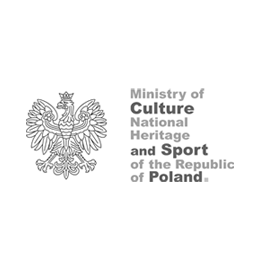
Co-financed by the Ministry of Culture and National Heritage of the Republic of Poland as part of the international cultural programme coordinated by Adam Mickiewicz Institute as part of the multi-annual programme NIEPODLEGŁA 2017–2022. Read more: https://culture.pl/en
Exhibition Sponsors
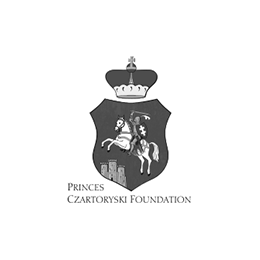


Exhibition Partners
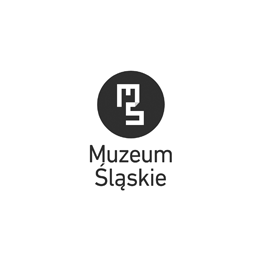
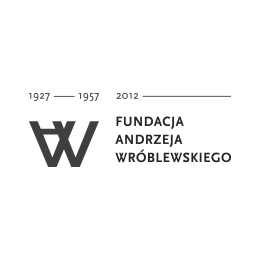
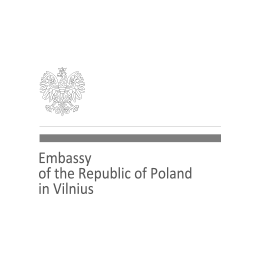

Institutional Sponsor
